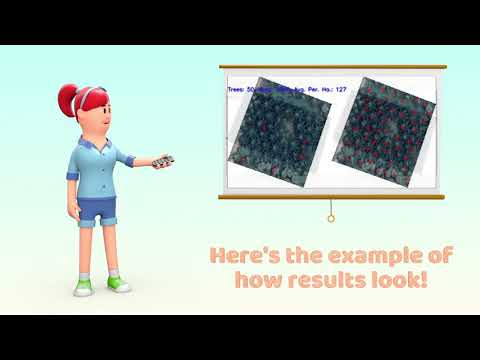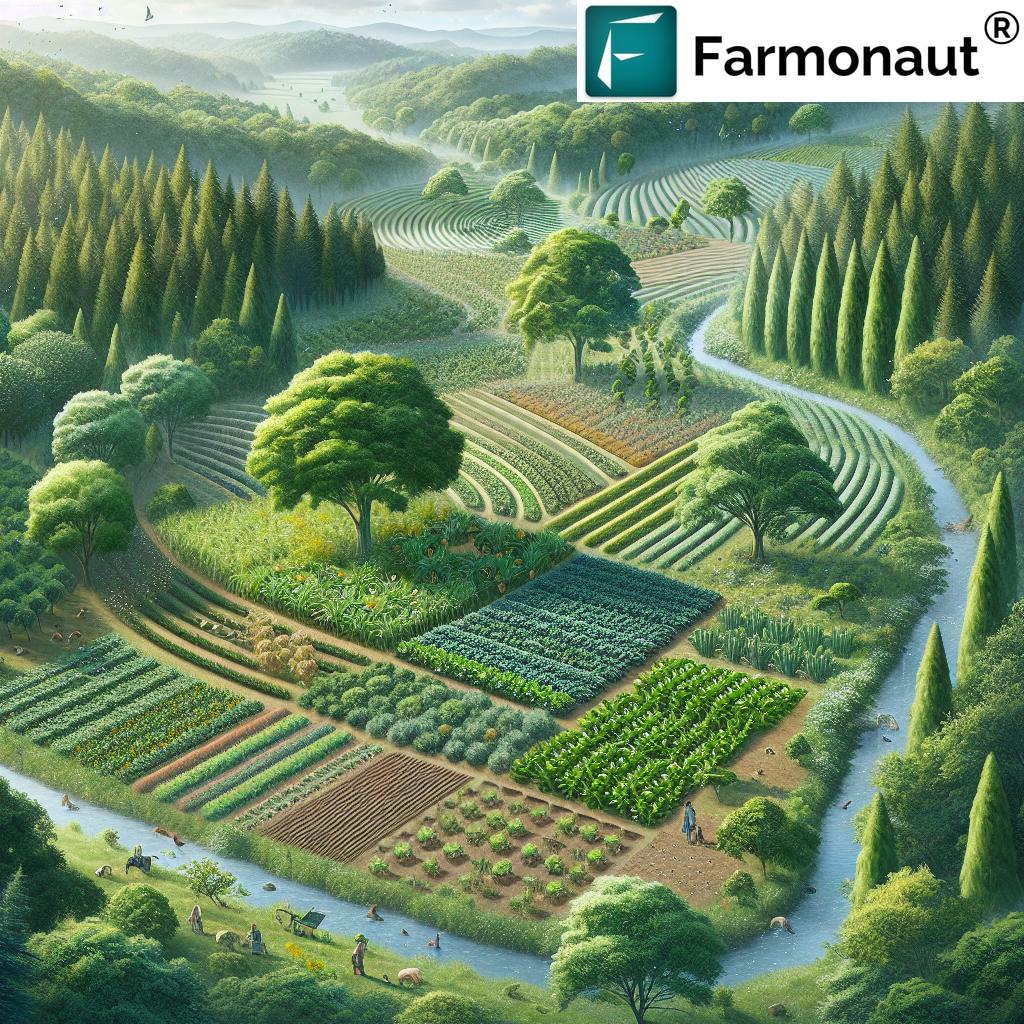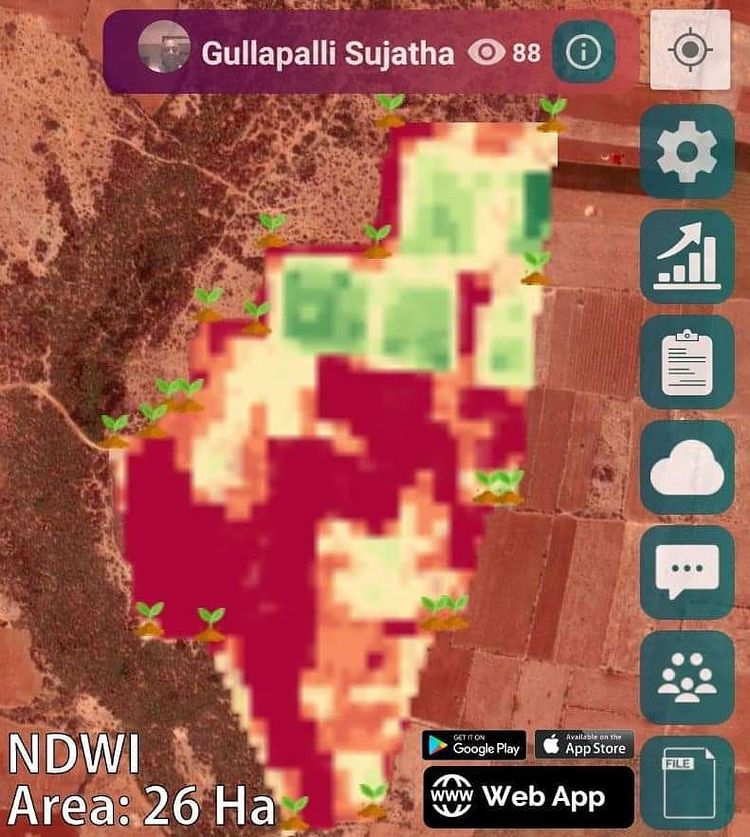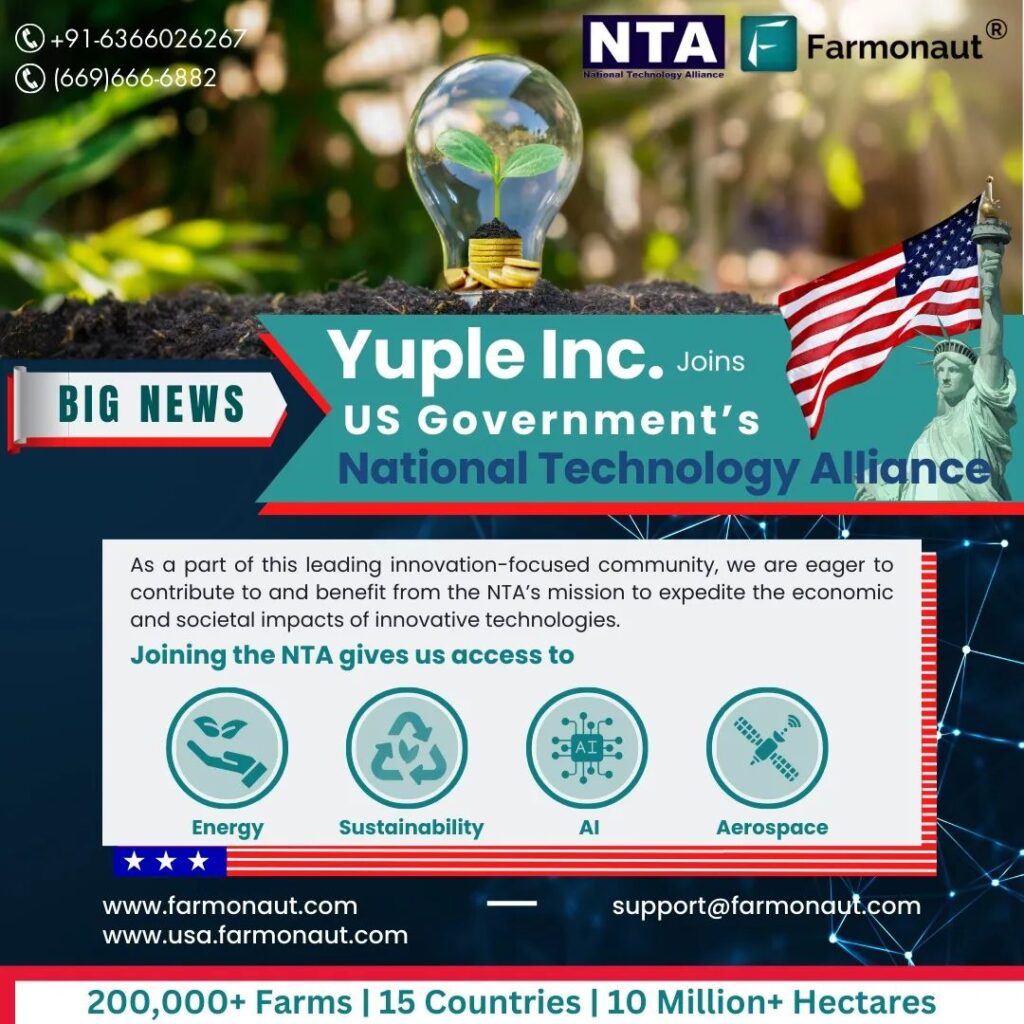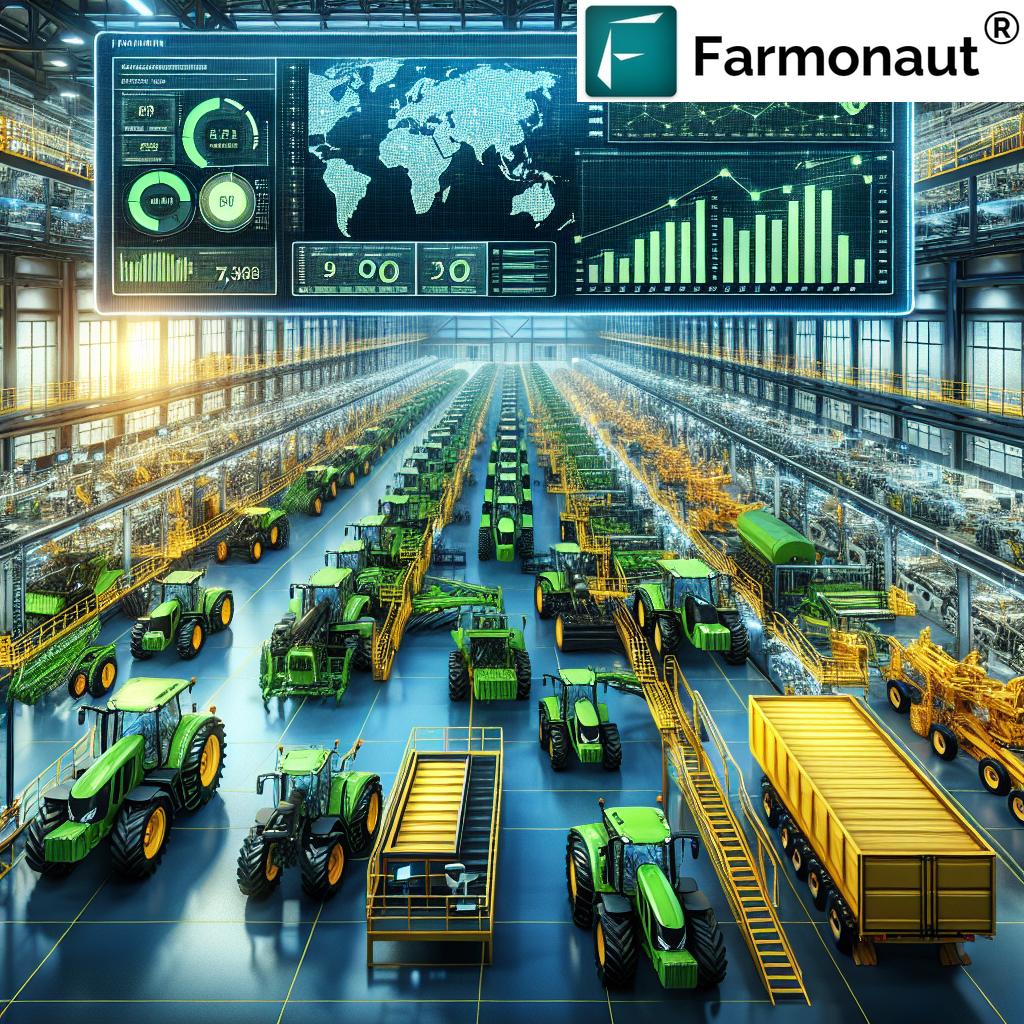Biofuel Hacks: 7 Game-Changing Sustainable Secrets
“Biofuels can reduce greenhouse gas emissions by up to 86% compared to traditional fossil fuels, according to recent studies.”
Table of Contents
- Introduction: The Biofuel Revolution
- Types of Biofuels: From First to Third Generation
- Biofuel Hacks: 7 Game-Changing Sustainable Secrets
- Comparative Impact and Innovation Table
- Biofuels in Agriculture: Opportunities & Challenges
- Forestry & Biomass Energy Solutions
- Environmental Impact of Biofuels
- Sustainable Innovations & Cutting-Edge Practices
- Farmonaut: Powering Sustainable Agriculture with Tech
- Frequently Asked Questions
- Conclusion: Harvesting Sustainable Energy for the Future
Introduction: The Biofuel Revolution
In our pursuit of a greener planet and more secure energy future, biofuels have emerged as a beacon of hope. As the global population grows and the demand for renewable energy sources escalates, we must look for sustainable biofuel production options that balance our agriculture, forestry, and environmental needs. Biofuels, derived primarily from biological materials, present a real alternative to fossil fuels—and when harnessed wisely, can transform farming, reduce greenhouse gas emissions, and catalyze a new era of resource-efficient development.
Yet the journey is complex. Biofuels in agriculture raise questions about land use, food security, biodiversity, soil health, and water resources. The diversity of biofuel types—each with distinct characteristics and challenges—requires careful evaluation. That’s where this in-depth guide comes in. Let’s unveil the game-changing innovations shaping sustainable biofuel production and discover how we can seize the opportunities for a cleaner, healthier world.
Types of Biofuels: From First to Third Generation
To fully grasp the sustainable promise and limitations of biofuels, we must break down their types: first, second, and third generations. Each comes with unique feedstocks, energy yields, environmental impacts, and influences on agriculture and forests.
First-Generation Biofuels: The Food-Crop Foundation
- Feedstocks: Corn, sugarcane, soybeans, and other edible crops
- Examples: Ethanol (from corn/sugarcane) and biodiesel (from soybean oil)
- Characteristics: These depend on food crop cultivation, linking directly to the food vs. fuel debate. They are easy to produce but may drive up food prices and cause land use changes.
Second-Generation Biofuels: Tapping Non-Food Biomass
- Feedstocks: Agricultural residues (e.g., wheat straw, rice husks), wood chips, dedicated energy crops like switchgrass.
- Examples: Cellulosic ethanol (from lignocellulosic materials).
- Characteristics: These do not compete with food production, offer better carbon balances, and may utilize marginal land. Learn more about cellulosic ethanol development.
Third-Generation Biofuels: Algae and Microorganisms
- Feedstocks: Algae, other microorganisms
- Examples: Algal oil converted to biodiesel, advanced biohydrogen
- Characteristics: Still under intensive research. Massive energy yields with minimal land requirements, and can be cultivated on marginal soil.
The Role of Biofuel Generations in Renewable Energy from Crops
- First-generation biofuels harness traditional crops for energy but may threaten biodiversity and food security.
- Second-generation sources leverage plant residues and forest biomass for more sustainable results.
- Third-generation options could revolutionize biomass energy solutions globally by utilizing algae—one of the fastest-growing organisms on earth.
“Over 30% of global biofuel production comes from agricultural waste, making it a key player in sustainable energy.”
Biofuel Hacks: 7 Game-Changing Sustainable Secrets
Let’s dive into the 7 pivotal strategies that empower us to engage in sustainable biofuel production while balancing environmental, agricultural, and economic priorities.
-
Utilize Agricultural Residues and Waste
- Transform straw, husks, wood chips, and manure into second-generation biofuels.
- Reduces dependency on food crops and prevents soil nutrient loss by returning some residues as organic matter or compost.
- Encourages a circular economy model in farming and agricultural development.
-
Adopt Agroforestry and Integrated Land Management
- Use agroforestry systems to mix trees, crops, and livestock for multi-functional land use.
- Enhances biodiversity, improves soil health, supports carbon sequestration, and delivers multiple income streams.
-
Agroforestry also provides shade and windbreaks for energy crops, helping reduce water stress.
Read more about crop plantation and forest advisory solutions from Farmonaut.
-
Accelerate Cellulosic Ethanol Development
- Emphasize second-generation cellulosic ethanol production from non-food plant materials.
- Reduces the “food vs. fuel” price volatility and competition for arable land.
- Enables use of fallow lands, marginal soils, and lower water consumption.
-
Embrace Algae-Based Biofuels and Microbial Power
- Pursue third-generation biofuels—algae deliver high energy yields with minimal impacts on land and water resources.
- Algae cultivation can use wastewater and non-arable land.
- Research into microbial fermentation is opening new frontiers for bioenergy innovation.
-
Focus on Sustainable Forestry Practices in Biomass Sourcing
- Adopt sustainable forest harvesting protocols: limit clear-cutting, ensure reforestation, and diversify tree species.
- Balance biomass extraction with carbon sequestration goals (forest as a living carbon sink).
- Employ tools like Farmonaut’s carbon footprint tracking to assess forest carbon stocks and the true emission savings of biofuel projects.
-
Promote Water-Efficient Crop and Biofuel Systems
- Opt for energy crops with low irrigation demands (e.g., switchgrass, miscanthus).
- Integrate smart irrigation, soil moisture monitoring, and deficit irrigation strategies to reduce water input while sustaining productivity.
- Use precision agriculture platforms like Farmonaut for real-time soil moisture tracking and optimal water allocation.
-
Implement Robust Policies and Incentives for Sustainable Biofuel Growth
- Advocate for government incentives for sustainable farming, efficient fertilizer use, and low-impact biofuel production.
- Support clear regulations on land use, reforestation requirements, and emissions monitoring (read about policy incentives here).
- Encourage investment in agricultural research and blockchain traceability across the biofuel value chain. Learn more about Farmonaut’s product traceability solutions.
Comparative Impact and Innovation Table
| Biofuel Type | Feedstock Source | Est. Energy Yield (MJ/kg) | Est. CO₂ Emissions Reduction (%) | Current Agricultural Applications | Key Sustainability Benefit | Notable Innovations |
|---|---|---|---|---|---|---|
| Biodiesel | Soybeans, Palm Oil, Canola, Algae | 37–42 | 50–86 | Farming equipment, farm vehicles | Biodegradable, reduces GHG emissions | Algae-based production, advanced catalysts |
| Bioethanol (1st Gen) | Corn, Sugarcane, Wheat | 27–30 | 30–66 | Fuel blends (E10/E85), tractors | Supports rural income, easy integration | High-starch crop engineering |
| Biogas | Manure, Crop Residues, Food Waste | 20–26 | 70–85 | Electricity/heat for farms, on-site fuel | Utilizes farm waste, improves sanitation | Digesters, integrated nutrient cycling |
| Cellulosic Ethanol | Agricultural residues, Switchgrass, Wood chips | 22–28 | 75–87 | Fuel blends, sustainable rural biomass | Non-food biomass, marginal land use | Enzyme/AI-driven fermentation, satellite field selection |
Biofuels in Agriculture: Opportunities & Challenges
The nexus of biofuels in agriculture is both an exciting opportunity and a battleground for sustainability debates. Let’s analyze the economic, environmental, and social factors that influence biofuel production across global farmlands.
Economic Opportunities & Food Security Concerns
- Biofuel expansion creates new markets for farmers, improving income stability, especially in rural areas.
- ‘Food vs. Fuel’ dilemma: Using edible crops for fuel may exacerbate food price volatility and threaten food security in economically vulnerable regions.
More on crop price dynamics and food security. - Second- and third-generation biofuels offer pathways to sidestep this issue—focusing on non-food biomass and agricultural residues.
Land Use, Cultivation, and Biodiversity Impacts
-
Expanding biofuel crop cultivation may lead to deforestation and habitat loss, especially in tropical regions.
See the link between deforestation and biofuel use. - Sustainable practices such as no-till farming and agroforestry can help maintain ecological integrity.
- Using switchgrass and perennial energy crops can minimize tillage and enhance biodiversity.
Soil Health and Pollution Effects
- Monoculture biofuel crops can cause nutrient depletion and increase the risk of soil erosion.
- Overuse of fertilizers and pesticides contributes to soil and water pollution.
-
Farmonaut’s real-time crop health monitoring can help farmers track soil moisture, nutrient status, and optimize input use,
reducing environmental impacts. Learn about large scale farm management for sustainability.
Water Use and Efficiency
- Corn, sugarcane, and other energy-intensive crops require significant water—posing challenges in arid regions.
- Adoption of water-efficient crops and IoT-powered irrigation can address scarcity. Leverage Farmonaut’s app for smart irrigation monitoring to reduce water stress.
Harnessing Agricultural Innovation
- AI-driven advisory systems, such as Farmonaut’s Jeevn AI, empower farmers with real-time strategies for managing biofuel crops, optimizing fertilizer, and adapting to climate risks.
- Blockchain-based traceability increases transparency throughout the biofuel supply chain. See how it secures product origin.
- Fleet and resource management powered by satellite data helps agribusinesses minimize fuel consumption, emissions, and losses. Read more about Farmonaut’s fleet management tools.
Forestry & Biomass Energy Solutions
Sustainable biomass energy solutions extend beyond agriculture—they rely strongly on forests for wood, dedicated energy crops, and ecosystem services. Here’s how we can sustainably maximize their role in the biofuel revolution.
Balancing Biomass Harvesting and Forest Integrity
-
Implement sustainable forestry practices to avoid overexploitation.
- Harvesting: Use selective logging and rotational harvests.
- Reforestation: Replant trees promptly and diversify species.
- Afforestation: Establish new forest cover on degraded land.
- Leverage advanced technologies (satellite-based monitoring) for tracking forest health and preventing illegal logging—Farmonaut’s carbon tracking system supports this vision.
Forests as Carbon Sinks and Biofuel Feedstock Sources
- Forests sequester carbon, curbing global warming.
- Removing too much biomass for biofuel can release stored carbon—undercutting climate advantages.
- Balance is essential: Only utilize surplus or waste wood, implement controlled burns, and ban clear-cutting for biofuel crop plantations.
Opportunities in Wood and Non-Timber Bioenergy
- Innovate with dedicated energy plantations—short-rotation coppice willow, poplar, and bamboo.
- Encourage community-managed forests and farmer cooperatives for shared stewardship and better economic returns.
Environmental Impact of Biofuels: Effects, Challenges, and Solutions
Evaluating the real environmental impact of biofuels involves dissecting the full production lifecycle—from crop growth and harvesting to transport and combustion. Here are the core metrics we must worry about:
Greenhouse Gas Emissions Reduction
- Estimations suggest biofuels can cut GHG emissions by up to 86% over fossil fuels (see trivia above).
- Actual reductions hinge on feedstock choice, farming practices, processing efficiency, and most crucially, land-use change.
- For maximum impact, prioritize non-food crops and waste residues; minimize clearing of carbon-rich ecosystems.
- Integrate carbon tracking platforms—evaluate with Farmonaut’s carbon footprinting feature.
Water and Soil Pollution
- Intensive cultivation of first-generation biofuel crops consumes vast volumes of water and often leads to eutrophication from runoff.
- Precision farming can reduce chemical use (see Farmonaut’s satellite management platform).
Biodiversity and Ecosystem Health
- Biofuel monocultures threaten species diversity, pollinators, and wildlife habitats.
- Solutions: Agroforestry frameworks, buffer strips, and repairs of marginal land maintain ecological corridors.
- Employ blockchain for transparent, traceable environmental compliance (Farmonaut product traceability).
Sustainable Innovations & Cutting-Edge Practices
Solutions for sustainable biofuel production rest on the fusion of technology, agronomy, and policy. Let’s highlight the most impactful innovations:
Satellite and AI-Powered Farm Management
-
Satellite imagery, machine learning, and AI recommendations allow farmers to make data-driven decisions about crop selection, irrigation, fertilizer use, and biofuel resource allocation.
Farmonaut’s app delivers these insights, boosting efficiency, minimizing inputs, and reducing risks.
Blockchain-Enabled Supply Chain Transparency
-
Product traceability using blockchain technology curbs fraud, strengthens food-to-fuel transitions, and ensures verified sustainable sourcing.
See product traceability solutions.
AI-Driven Advisory Systems for Crop Optimization
-
Real-time advisory solutions—such as Farmonaut’s Jeevn AI—process meteorological, agronomic, and satellite data to create precision action plans for maximized yield and sustainable resource use.
Explore the AI-powered advisory system here.
Fleet Management & Carbon Footprint Smart Tools
-
Using fleet management systems to optimize logistics and reduce emissions is a game changer for agribusinesses.
Farmonaut’s fleet management offering tracks vehicles, machinery, and fuel use to increase on-site efficiency.
Integrate via API | API Documentation
Supporting Financial Access and Insurance
- Crop loan and insurance access is vital to enable wide adoption of sustainable farming and biofuel crops. Farmonaut’s crop loan and insurance tool uses satellite verification, reducing fraud and helping farmers qualify for better terms.
Farmonaut: Powering Sustainable Agriculture with Tech
As we’ve witnessed, sustainable biofuel production relies on the marriage of advanced technology and resource stewardship. Farmonaut stands at this intersection, offering farmers and agribusinesses worldwide a powerful platform that delivers:
- Satellite-Based Crop Health Monitoring: Track vegetation health (NDVI), soil moisture, and optimize input use, thus safeguarding yields and environmental resources. Web & Mobile App
- Jeevn AI Advisory: Personalized, AI-driven warnings and suggestions for pest, disease, irrigation, and crop management—directly impacting biofuel crop sustainability.
- Blockchain Traceability: Secure, immutable supply chain records for biofuels, food, and agricultural commodities, strengthening trust and marketability.
- Carbon Footprint Module: Monitor and minimize energy and carbon emissions from every operation. Start tracking your emissions today.
- Fleet & Resource Management: Efficient scheduling, route planning, vehicle monitoring, and more—crucial for minimizing fossil fuel use in agri-logistics.
- Crop Loan and Insurance Modules: Make resilience and sustainability bankable and insurable for even the smallest landholders.
With an accessible subscription model, mobile and web integration, APIs for developers, and a mission to democratize precision farming, Farmonaut is not a marketplace or seller of agri-inputs, but a technology enabler for real environmental impact.
Frequently Asked Questions
What are biofuels, and how do they differ from fossil fuels?
Biofuels are renewable fuels derived from biological materials such as plants, agricultural residues, and algae. Unlike fossil fuels, which are finite and carbon-intensive, biofuels utilize current carbon cycles and can be replenished seasonally, offering better potential for carbon emission reductions and sustainable agriculture.
Why are second- and third-generation biofuels considered more sustainable?
Second-generation biofuels use non-food biomass (residues, energy crops), avoiding direct competition with food production and often utilizing marginal lands. Third-generation biofuels (from algae and microorganisms) can deliver ultra-high yields with minimal land, freshwater, or fertilizer requirements—solving many of the issues linked to first-generation fuels.
How can farmers make biofuel crop production more sustainable?
By adopting agroforestry systems, integrated pest management, precision agriculture, and rotating biofuel crops with food crops, farmers can improve soil health, reduce inputs, maintain biodiversity, and boost both yields and land resilience. Leveraging tools like Farmonaut’s monitoring app further amplifies these benefits.
Can biofuel production help reduce climate change impacts?
Yes, especially if sustainable practices are followed. Biofuels can cut greenhouse gas emissions by displacing fossil fuels and sequestering carbon through new crop growth or forest regrowth. However, net benefits depend strongly on feedstock, land-use history, and emissions throughout the supply chain.
What is the future of biofuels in global agriculture?
Rapid innovation in cellulosic ethanol, algae fuels, and technology integration (AI, blockchain, satellite monitoring) is unlocking safer, more sustainable biofuel pathways. Farmonaut and similar platforms will play a vital role in scaling up these solutions and democratizing climate-smart agriculture for all.
Conclusion: Harvesting Sustainable Energy for the Future
Biofuels—properly managed—represent one of agriculture and forestry’s boldest answers to the climate and energy crises. But transforming these opportunities into reality requires that we:
- Choose sustainable practices at every level of biofuel production
- Invest in innovations—from agroforestry to AI, blockchain, and satellite monitoring
- Champion robust regulations and equitable incentives
- Leverage data-driven farm management to maximize yields, cut emissions, and protect resources
As we confront ecological and economic challenges head-on, each of us—farmers, entrepreneurs, researchers, and policy-makers—can take action. By doing so, we not only advance biofuel solutions, but also secure a future in which energy independence, food security, and environmental care walk hand in hand. Join us, and let’s build a thriving, climate-resilient bioenergy landscape for generations to come.



